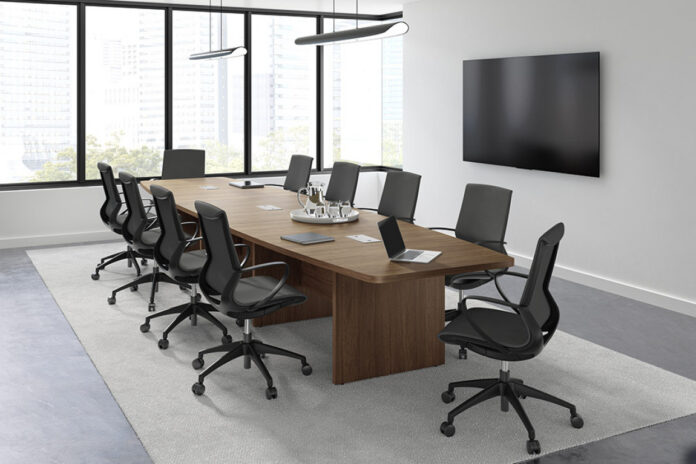When choosing a conference table, there are many factors to consider. The shape, size, and length are essential, but other aspects are also important to think about.
Most importantly, look for contract quality. Contractor-quality tables are made to withstand heavy use and frequent relocation. They typically feature durable materials and have a warranty.
Seating Capacity
Regarding conference tables, the most important consideration is how many people they will seat. This will determine what size and shape of table you need. The general rule is that the longer the table is, the more people it can seat. For example, a six-foot-long table will seat six people, while a twenty-foot-long table will seat twenty.
There are many different shapes of conference tables, including square, rectangular, boat-shaped and racetrack. Each offers additional seating capacity and arraignment options. Boat-shaped conference tables have curved sides and offer comfortable sight lines when sitting. They also look beautiful and elegant.
When determining the seating capacity of your conference table, it is important to consider the room size and existing furniture. Typically, you will want to leave a 3-foot walkway around the conference table. So subtract that amount from the room dimensions to get the maximum table size that will fit into your space. This will ensure that everyone in the room can safely move around the table without feeling cramped.
Functionality
The functionality of a conference table is about more than just seating capacity. There are a variety of factors that impact the meeting table’s ability to work with future conference room technology trends. For example, a table’s material and finish affect its design aesthetic and whether it can blend with existing office decor or it may clash.
The table shape and length are other important considerations. For example, a boat-shaped table is designed to offer clear sight lines for meeting participants, which can be useful when a presenter needs to move around the room to talk with each participant.
The length of the table is also important because it must fit in the conference room along with the seating and other furniture. When shopping for a conference table, it is recommended that you measure the conference room to ensure your selected table fits properly. You should also note where the door and power module ports are in the room so you don’t purchase a table that blocks access to these features.
Style
A conference table must fit within the style of the conference room. While function is the most important aspect, the aesthetics of the room and how it will be used should also be considered. This can be accomplished by choosing a table that compliments the room’s other furniture and color scheme.
There are several different styles to choose from when selecting a conference table. Some are more modern, while others are more traditional. There are even options that allow for a mix of both styles.
The most common conference tables are rectangular, but many other options exist. There are boat-shaped tables with standard corners that flare out on the long sides. These give a more spacious look to the table. There are also racetrack-shaped tables that take a rectangular shape and round out the corners. These offer a more elegant design, and they also come with a variety of options for power module ports. There are also modular conference tables that allow the shape to be arranged in a T or U shape to accommodate more people.
Materials
When buying conference tables for an office, it’s important to choose durable materials that will look great through years of use. Commercial conference table-grade high-pressure laminates are affordable and durable, keeping your meeting space fresh and professional. Veneer offers a luxurious look but requires more maintenance over time. If you want a unique look, paint powder coating is available in almost any color.
In an age of virtual communication, the right conference table can reinforce the importance of face-to-face meetings with employees and clients. The shape of a conference room table can also make an impression, especially for new and prospective customers.
For instance, a young company with a playful aesthetic could benefit from a conference table with an unusual style or colorful design. Similarly, a formal, high-end company could benefit from a quartz conference table top resembling marble or limestone. These are just a few examples, but the options are endless when you create custom conference tables that meet your needs and company culture.
Budget
It’s important to remember the budget associated with a conference table. Although the goal is to get a great look for an affordable price, investing in a quality piece that can last over time is also wise. The more durable the conference table, the fewer times it will need to be replaced.
In addition to cost, a great conference table should fit comfortably in the room where it will be housed. Choosing an oversized table can overwhelm a room and diminish its usability. Guests should be able to slide chairs in and out easily, pivot their chairs to focus on a speaker, and move around the table.
Conference tables can be found in many styles, from traditional to contemporary. For a modern look, consider a boat-shaped or racetrack meeting table that offers more maneuverability in a tight space. Other unique options include a river conference table that marries the flow of cool blue glass with the curvature of live-edge slabs or a one-of-a-kind stone table that features the sparkle, striations and variations of quartz.





